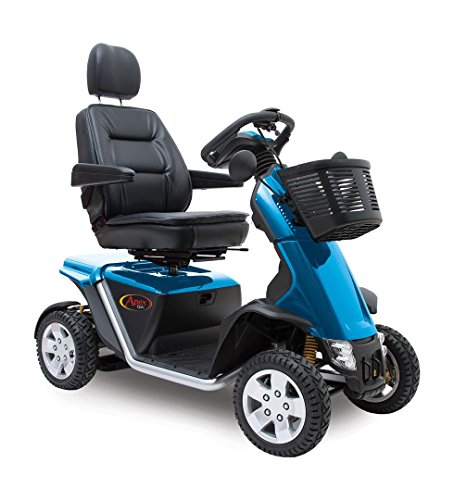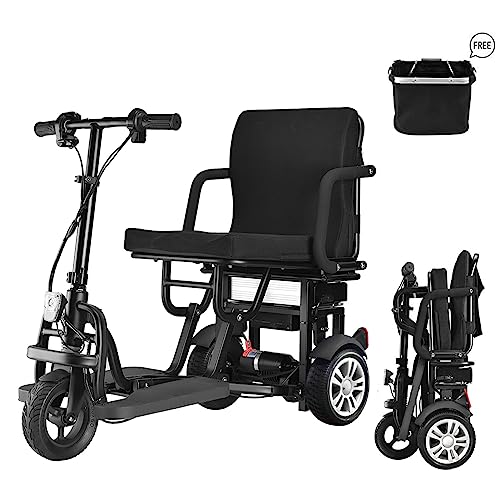In recent years, electric mobility scooters have gained significant popularity in the United Kingdom. With their ability to provide freedom and independence, these devices are designed to enhance the quality of life for individuals with mobility challenges. Whether navigating your local high street or exploring scenic parks, mobility scooters offer a practical solution for those who might otherwise find physical movement a challenge. This article dives into everything you need to know about electric mobility scooters in the UK, covering their benefits, types, legal requirements, and frequently asked questions (FAQs).

What Are Electric Mobility Scooters?
Electric mobility scooters are battery-operated vehicles designed to assist people with limited mobility. Equipped with comfortable seats, handlebars, and rechargeable batteries, these scooters allow users to travel short to medium distances easily, without relying on others. Unlike wheelchairs, they are powered by electric motors, providing greater convenience and minimizing physical exertion.
From elderly individuals to those recovering from injuries or dealing with long-term health conditions, the use of mobility scooters spans a broad spectrum of users. In the UK, they’ve become a common and reliable mobility aid that promotes accessibility and inclusion.
Benefits of Electric Mobility Scooters
Using an electric mobility scooter comes with a host of advantages:
- Independence: These scooters empower individuals by allowing them to handle daily tasks—like grocery shopping or doctor visits—on their own.
- Convenience: With a compact and lightweight design, many mobility scooters are easy to transport, making them ideal for both urban and rural settings.
- Environmentally Friendly: Electric mobility scooters produce zero emissions, reducing your carbon footprint while enjoying increased mobility.
- Cost-Effective: Compared to ongoing taxi fares or car maintenance, mobility scooters present an affordable transport option for short trips.
- Customizable Options: Many models cater to the specific needs of users, offering various configurations, speeds, and additional features like lights and storage compartments.
Types of Mobility Scooters
Choosing the right mobility scooter depends on a user’s individual needs and preferences. In the UK, mobility scooters are classified into two categories by law:
Class 2 Mobility Scooters:
- Designed for pavement use with a maximum speed of 4 mph.
- Lightweight and more compact, making them ideal for everyday errands in urban areas.
- Suitable for shorter distances and easily portable.
Class 3 Mobility Scooters:
- Road-legal scooters that can also be used on pavements.
- Capable of a maximum speed of 8 mph on roads and 4 mph on pavements.
- Equipped with advanced features like mirrors, horns, and lights for increased safety.
- Suitable for longer distances and uneven terrains.
Legal Guidelines for Mobility Scooter Users in the UK
If you’re considering purchasing a mobility scooter, it’s essential to understand the UK’s legal responsibilities and regulations. Here’s a quick breakdown of important rules to follow:
- Registration: Class 3 mobility scooters must be registered with the Driver and Vehicle Licensing Agency (DVLA).
- Age Limit: Users must be at least 14 years old to operate Class 3 scooters, while no age restriction applies to Class 2 scooters.
- Insurance: While not legally required, it’s highly recommended to have insurance to cover accidents, theft, or damage.
- Restricted Areas: Mobility scooters are not permitted on cycle lanes or motorways. They can be used on pavements, roads (for Class 3), and pedestrian areas.
- Lights and Indicators: Class 3 scooters must have appropriate lights, indicators, and rear-view mirrors when used on roads.
How to Choose the Right Electric Mobility Scooter
When purchasing a mobility scooter, consider the following factors:
Key Considerations:
- Usage: Will the scooter be used on pavements, roads, or rough terrain? Determine which class of scooter suits your needs.
- Weight Capacity: Ensure the scooter’s weight capacity accommodates the user and any additional items like shopping bags.
- Portability: Foldable models are ideal for individuals who plan to transport the scooter frequently.
- Battery Life: Choose a model with suitable battery range to avoid running out of power during your trips.
- Safety Features: Look for features such as anti-tip wheels, seatbelts, and speed controls for added security.
Additional Features to Look For:
- Comfortable Seating: Adjustable and cushioned seats enhance comfort during longer rides.
- Storage Options: Built-in baskets or compartments provide convenience for carrying personal items.
- Weather Resistance: A weatherproof or waterproof scooter ensures you're prepared for unpredictable UK weather.
Frequently Asked Questions (FAQs)
Q1: Do I need a driving license to use a mobility scooter in the UK?
No, a driving license is not required to operate a mobility scooter. However, it’s important to follow the rules set for pavement and road use.
Q2: Www.Mymobilityscooters.Uk How fast can mobility scooters go in the UK?
Class 2 scooters have a maximum speed of 4 mph, while Class 3 scooters can reach up to 8 mph on roads. Both classes are restricted to 4 mph when used on pavements.
Q3: Can I travel with my mobility scooter on public transport?
Yes, many buses, trains, and taxis in the UK are equipped to accommodate mobility scooters. Be sure to check with your transport provider in advance for any specific guidelines.
Q4: What is the average price of a mobility scooter in the UK?
Entry-level models may cost around £500, while advanced Class 3 scooters can range from £2,000 to £5,000, depending on features.
Q5: How often should I charge my mobility scooter?
It’s recommended to charge the scooter after every use to ensure the battery is always ready. For infrequent users, a monthly top-up charge is good practice.
Popular Brands of Mobility Scooters in the UK
The growing demand for electric mobility scooters in the UK has led to a wide range of options from reputable manufacturers. Some popular brands include:
- TGA Mobility: Known for robust and comfortable designs.
- Drive Medical: Offers versatile models catering to all user needs.
- Invacare: Provides reliable, high-performance scooters suitable for various terrains.
- Pride Mobility: Focuses on lightweight and easy-to-maneuver scooters.
Tips for Maintenance and Care
Proper maintenance extends the lifespan and performance of your mobility scooter. Here are some tips:
- Keep the battery charged: Avoid letting your battery drain completely. Follow the manufacturer’s guidelines for optimal maintenance.
- Check the wheels: Ensure that the tires are in good condition and inflated to the recommended pressure.
- Clean regularly: Wipe down the scooter to prevent dust, dirt, or moisture build-up that could damage components.
- Inspect brakes and controls: Test these before every ride to ensure they are functioning properly.
Electric mobility scooters have revolutionized accessibility for many individuals in the UK, offering a sense of freedom and the ability to stay active. With various models catering to different needs, there’s no shortage of options for those looking to invest in this life-enhancing device. By understanding the types, legal requirements, and maintenance tips, you’re well-equipped to choose the ideal mobility scooter that meets your needs.
For anyone seeking greater independence in their daily life, an electric mobility scooter is more than just a mode of transportation—it’s a gateway to improved confidence, convenience, and quality of living.









